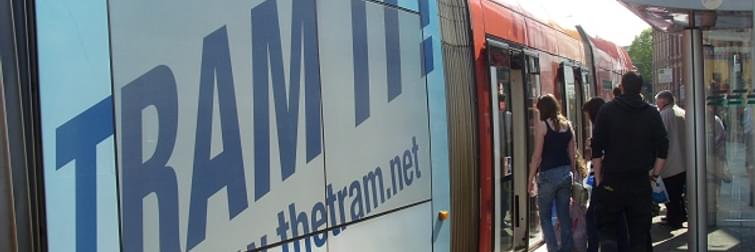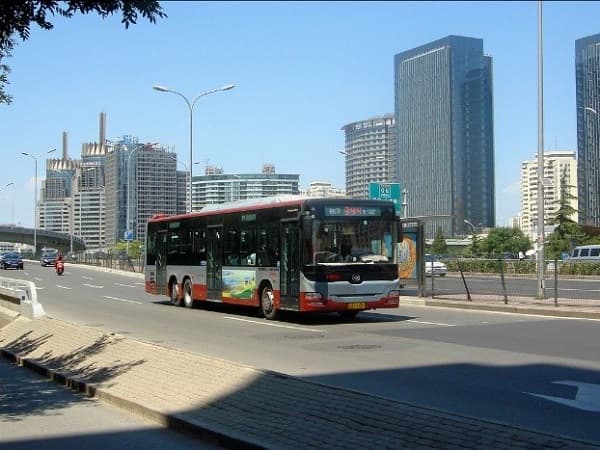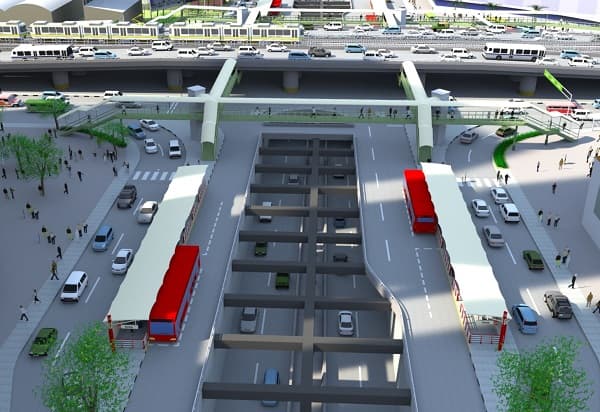
blog: ITP responds to DfT's light rail and rapid transit consultation
Tuesday 28th May 2019
We recently submitted a response to the DfT's call for evidence on Light Rail Transit (LRT) and other rapid transit solutions, as we feel there is significant opportunity for rapid transit solutions to be introduced in England, particularly in medium/large cities where there is a high demand for travel. In such areas, a mass transit solution which can move large numbers of people between common origins and destinations, will achieve many benefits:
- Encourage modal transfer from the car thus reducing congestion and addressing air quality issues through reduced NOx emissions.
- Improve access to work, education, shopping and leisure, particularly for those without access to a car or who are lower paid.
- Improve the economy by enabling people to travel quickly and reliably; less congestion will also assist freight movements. In Nottingham, the southern NET tram extension has created an estimated £100m boost to the local economy.
- Enable growth - we are working with a number of major towns and cities whose growth aspirations are predicated on the delivery of rapid transit networks that are complemented by active travel and people-centred design of public spaces and well-integrated with existing local public transport services.
- Creates jobs – through those employed to operate the service and its support staff as well as through the supply chain. For example, in the bus industry, 124,000 people were employed in Great Britain in 2010/11; a further 83,000 jobs through its supply chain.
LRT vs BRT
Although badged as ‘other rapid transit solutions’ we were surprised that the questions posed, focussed only on rail-based solutions.
Having helped design and implement many Bus Rapid Transit (BRT) schemes across the world, we felt it was important to highlight in our response that BRT can offer a similar service to that of light rail but is more flexible and much cheaper to implement.
One may think that capacity is a reason for not considering BRT, assuming LRT can accommodate many more passengers. This is a myth. Contrary to what was stated in the Call for Evidence Paper, BRT systems around the world carry in excess of the 20,000 quoted for LRT. Notable cases include Guangzhou (27,000) Belo Horizonte (35,000) Curitiba’s Sul corridor (25,000) and Bogota’s Caracas corridor carrying 49,000 passengers per hour, per direction.

Another reason may be related to quality, the perception being that LRT offers a better quality ride.
However, this has proved not to be the case where the attention to detail in design, segregation and reliability associated with LRT has been achieved. For example, in Nantes, user satisfaction surveys have shown Line 4, which is a busway, to be equal to that of the LRT lines.
Similarly, in Belfast, Glider has shown how a rubber-tyred approach can meet, in entirety, objectives of emissions reduction, community integration and accessibility with patronage exceeding pre-opening forecasts. Ciaran De Burca, Department’s Director for Transport Projects and Business Services, stated:
“Since its introduction in September, the Glider has far exceeded expectations for patronage. In the first six months of operation journey numbers are already hitting levels that the business case projected for 2031.”
So, experience elsewhere has shown that BRT can equal LRT in capacity and quality. But in addition to this, BRT offers many more benefits, most notably, the cost of implementation.
Cost will inevitably depend on the type of scheme introduced and the level of infrastructure required, but typically, a BRT scheme will cost a quarter of that of an LRT scheme.

The recently opened Glider bus based rapid transit line in Belfast has a reported cost of £4m per km compared to the cost of Metrolink (phase II) in Manchester at £25m per km and circa £30m per km in Nottingham. LRT systems also require a longer lead-in time with construction taking much longer than rubber-tyred solutions.
Another key benefit of BRT over LRT is the flexibility it allows. The requirements for travel in cities and city regions are changing as lifestyles, technology, and shopping/work/leisure behaviour changes, and new developments are built. In addition, there is a move towards more individualised transport choices (such as Uber), and an expectation for transport to be flexible and demand responsive.
The future of rapid transit
In an ever-changing environment of travel needs and expectations, it is important to offer a transport solution which can adapt to change and grow in harmony with new developments. This is something that a rail-based solution cannot respond to. Therefore, the provision of rapid transit should be done so by carefully considering future need and not restricting the ability to adapt by adopting restrictive technology.
There may be instances where LRT is the most appropriate option, but it is vital that all public transport options are considered at the outset. It is crucial that a public transport strategy is developed, with clear objectives, considering the current and future needs for transport along with the benefits and constraints of each option.
Our experience of developing public transport strategies across the country has shown the importance of developing a public transport system which is fully integrated, and multi-modal, which caters for the needs of all residents and visitors to an area, in the most efficient and cost effective way.
Ultimately, any rapid transit solution requires a strong political backing as brave decisions are often required, for example, to reallocate road space away from car users for rapid transit infrastructure, or introducing a workplace parking levy, as in Nottingham. By responding to the call for evidence, we hope that we have highlighted the importance and potential of all rapid transit solutions and that the DfT will provide some of the political backing required to make the necessary changes to improve the environment, economy, health and growth of our cities.
If you'd like to find out more about the support and services we can offer for public transport, click here or get in touch.
